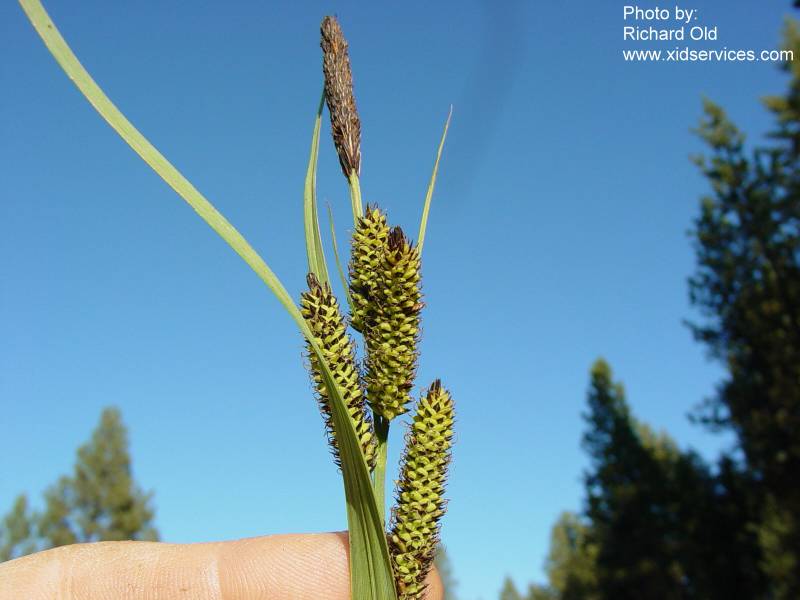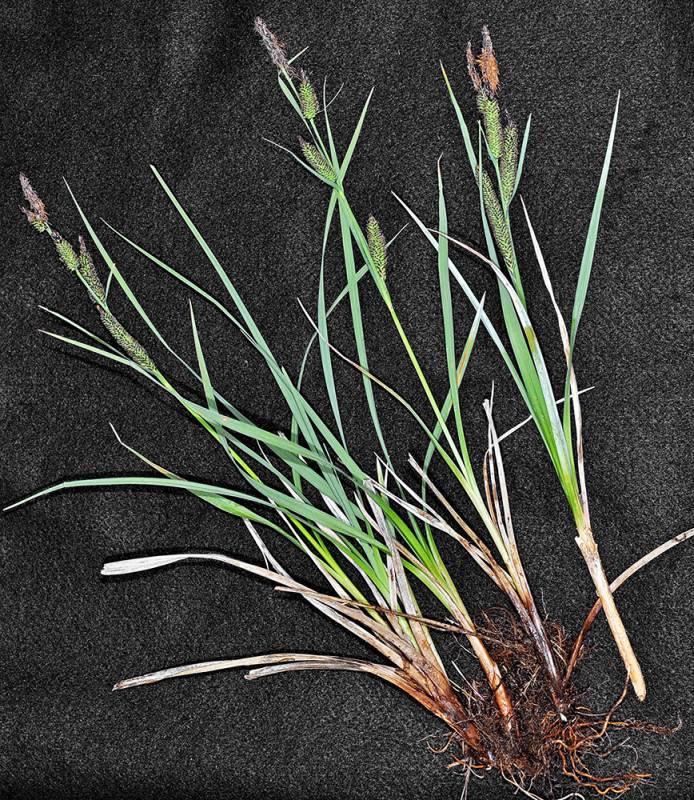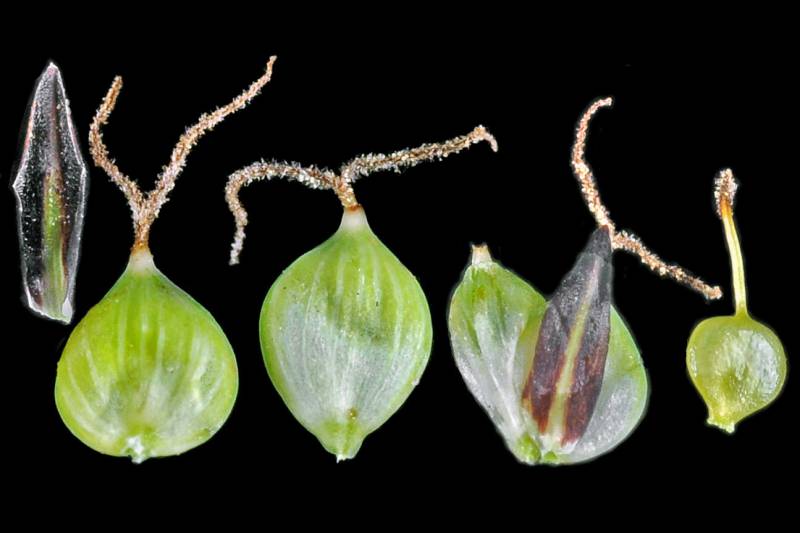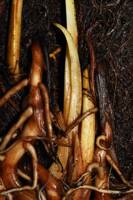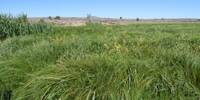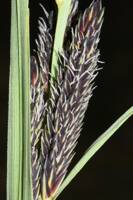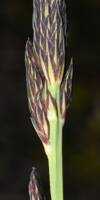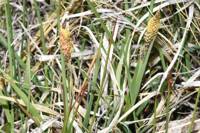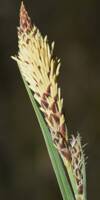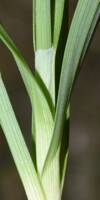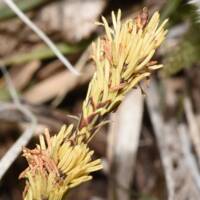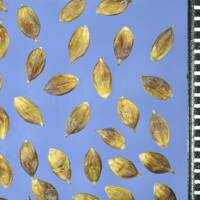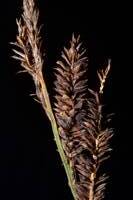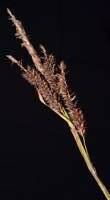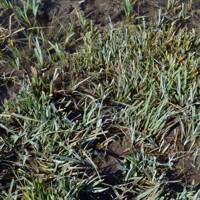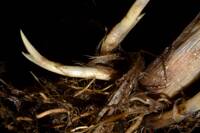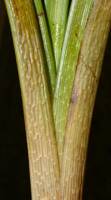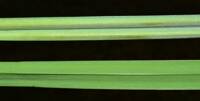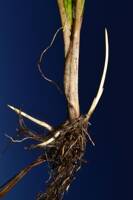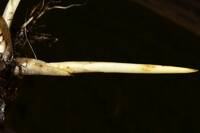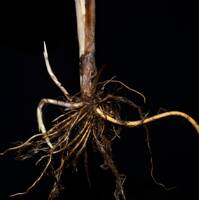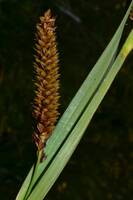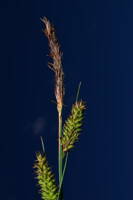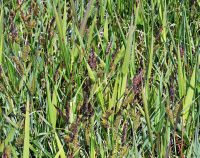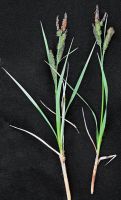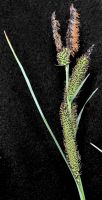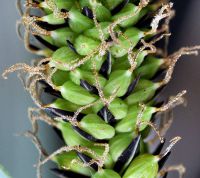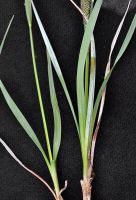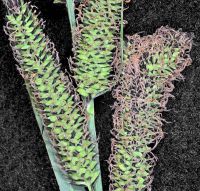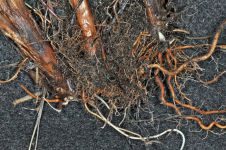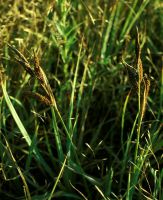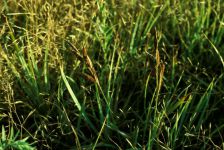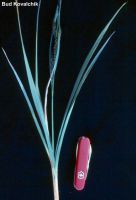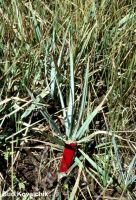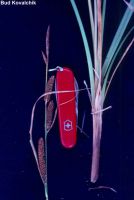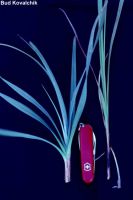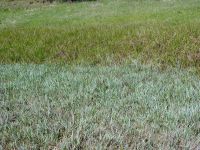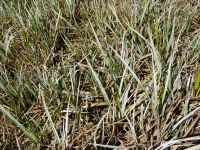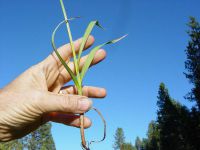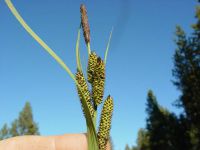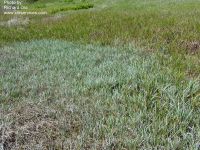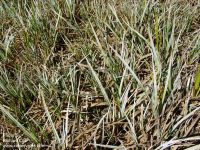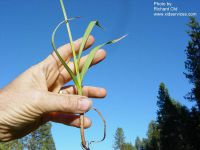Distribution: Occurring east of the Cascades crest in Washington; Washington to California, east to the Rocky Mountains and northern Great Plains.
Habitat: Wet meadows and other wet areas, often in alkaline areas, lowlands to moderate elevations in the mountains
Flowers: May-July
Origin: Native
Growth Duration: Perennial
Conservation Status: Not of concern
Pollination: Wind
Perennial herb, varyingly cespitose to rhizomatous with internodes; typically monoecious; stems generally triangular, often solid within.
Leaves 3-ranked, usually tufted at stem base; blade 3--12 mm wide, thick, scabrous on midrib and margin, glabrous otherwise, generally strongly blue or glaucous.
Inflorescence composed of lateral spikelets in spike, raceme, panicle, or head-like arrangement, 3-6 x 5-9 mm, generally 2-colored, pressed flat; inflorescence bract wider than spikelets, base often dark-margined; flowers unisexual, no perianth; staminate flower with generally 3 stamens; pistillate flower enclosed by perigynium, bract often white-margined, obtuse to awned, tip or awn glabrous, styles 1, stigma 2-3 and exserted.
1.3-2 mm x 0.9-1.8 mm; perigynium number 30-150, ascending, 2.6-4 mm x 1.6-2.5 mm, sessile, not papillate, veined, tough, often red-dotted, beak ranging 0.2-0.6 mm, tip brown or purple, teeth minute or occasionally hairy.
Publication: Amer. J. Sci. Arts, ser. 2. 18: 102. 1854.
Carex nebrascensis Dewey var. eruciformis Suksd.
Carex nebrascensis Dewey var. praevia L.H. Bailey
Carex nebrascensis Dewey var. ultriformis L.H. Bailey
PNW Herbaria: Specimen records of Carex nebrascensis in the Consortium of Pacific Northwest Herbaria database
WA Flora Checklist: Carex nebrascensis checklist entry
OregonFlora: Carex nebrascensis information
E-Flora BC: Carex nebrascensis atlas page
CalPhotos: Carex nebrascensis photos

